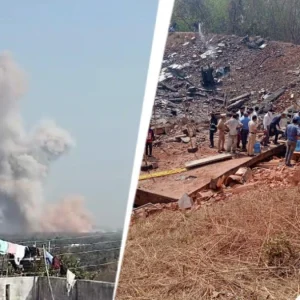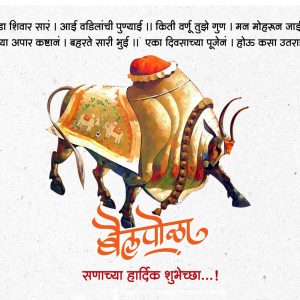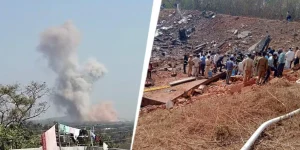Enveloped in a thick foil of nature, accentuated by the scent of the flowering blossoms blending miraculously in the crisp fresh air, Nainital is truly the treasure trove of Kumaon. It is among the most visited hill stations of North India since British period.
Perched at an elevation of 2,084 metres above sea level, the glittering city of Nainital is hailed for being a parent to the ravishing Naini Lake from which it has earned the epithet of being the lake city. The Nainital town not only lures the domestic travelers and tourists but also a number of foreign tourists. It shines as a glittering jewel in the Himalayan Mountains and is surrounded with lakes and nature’s bounty.
The sheer appeal of the eye-shaped Naini Lake is simply enchanting, be it in days when boating goes on in full swing, or at nights when its bank is lit by numerous lights highlighting border. The sound of Naina Devi Temple bells are enough to guide anyone looking for direction. From here, most of the tourists embark on their journey to learn more about this once British occupied capital.
If plans extend to nearby places, people busy in arranging fields for terrace farming meticulously could be seen in Ranikhet. Not every day one can view such hard work of human. Legends tell about the eyes of Goddess Sati dropping where Naini Lake stands today while Lord Shiva was carrying Her body and grieving; the goddess who represents Shakti is worshipped in the temple located at northern shore of the lake. This is just a single myth; there are many other popular stories that could be heard once plans of Nainital tour are in place.
The calm and cool environment is salubrious, healing soul just as the faith healing mind. The credit to raise a city around an ethereal lake goes to British. P. Barron, a Sugar trader. He is associated with the founding of the place in 1841, but since then people (residents as well as tourists) know it to be a speck of divine in more than one way.
Rituals, celebration, myths, faith, devotion, romance- Nainital tourism has many faces. Depending upon what inspires more a tourist, the place garbs itself in a perfect host. Bound by the beautiful peaks, lush greenery, valleys and Ballia River, the city is unscrupulous in providing soul rejuvenating experience. Ride a boat in the lake and the feeling comes stronger than ever. Deciding to spend holidays in Nainital can leave tickles in memories for life.
Nainital is a charming hill station located at the foothills of the Kumaon ranges in Uttarakhand. Located close to Dehradun and Delhi, it is the most visited hill station in North India. Nainital is a perfect weekend getaway from Delhi and the nearby places.
Nainital experiences a pleasant climate throughout the year, making it a popular hill station for families, couples and even solo travellers. It is easily accessible from nearby major cities by road and is ideal for a 2-day visit. The Naina Lake is the centre of Nainital with Mall Road on one side, Thandi Sadak on the other side, and the bus stand opposite it.
Founded by the British due to its resemblance to the Cumbrian Lake District, Nainital brims with elegant colonial structures that amplify the beauty of this place. There are some small hill towns near Nainital like Pangot, Ranikhet, Almora, which remain comparatively unexplored. Nainital also has some small trekking trails.
Whether you want to go boating in the beautiful Naini Lake, relish some Garhwali and Kumaoni delicacies, shop for mementoes, or take a ropeway ride to soak in the beauty of the Himalayas from Snow View Point, Nainital is sure to leave an imprint on you.
Nainital is referred to in the ‘Manas Khand’ of the ‘Skanda Purana’ as the Tri-Rishi-Sarovar,the lake of the three sages ,Atri,Pulastya and Pulaha who were reputed to have arrived here on a penitential piligrimage, and, finding no water to quench their thirst dug a hole and siphoned water into it from Mansarovar the sacred lake in Tibet.
The Second important mythological reference to Nainital is as one of 64 ‘Shakti Peeths’.These centres were created wherever parts of charred body of Sati fell ,when Lord Shiva was carrying around her corpse in grief .It is said that the left eye (Nain) of Sati fell here and this gave rise to patron deity of town Nainital . It is said that the lake is formed in the emerald eye shape . Naina Devi temple is located at the northern end of the lake . Thus name of Nainital derivated from Naina and the tal (Lake).
British Settlement
The british occupied Kumaon & Garhwal in 1815 .After the British Occupation ,E. Gardiner was appointed as the commissioner of Kumaun Division on May’8th 1815 .In 1817 the second commissioner of Kumaun Mr. G.W. Traill has conducted the second revenue settlement of Kumaun , Mr. Traill was the first European to visit Nainital but he did not popularize his visit in respect for the religious sanctity of the place.


In the year 1839 an English businessman from Rosa , Mr. P. Barron a sugar trader and his friend an avid hunter strayed into the hills while hunting they got lost and while finding there way back chanced on the wondrous spot. So enamored was Barron with the vision of the placid lake that he left the sugar business and build a European Colony on shores of the lake .In 1841, Nainital appeared in issue of the ‘Englishman Calcutta’ announcing the discovery of a lake in the vicinity of Almora.
According to the earliest data available on tourist in Nainital by 1847, it had become a popular hill resort. On 3rd October 1850, the Nainital Municipal Board was formally constituted. It was the second Municipal Board of North Western Provinces. To catalyse the formation of a town the administration transferred land to the wealthy Sah community of Almora, on condition that they build houses on the land. In 1862, Nainital became the summer seat of the North Western Provinces. After it was made the summer Capital, a remarkable expansion of the town occurred with the growth of magnificent bungalows all around and construction of facilities such as marketing areas, rest houses, recreation centres ,clubs etc together with the secretariat and other administrative units. It also became an important centre of education for the British who wanted to educate their children in the better air and away from the discomforts of the plains.













5 Comments
Comments are closed.